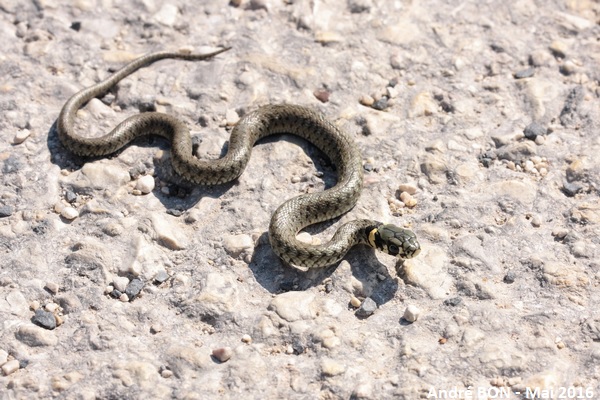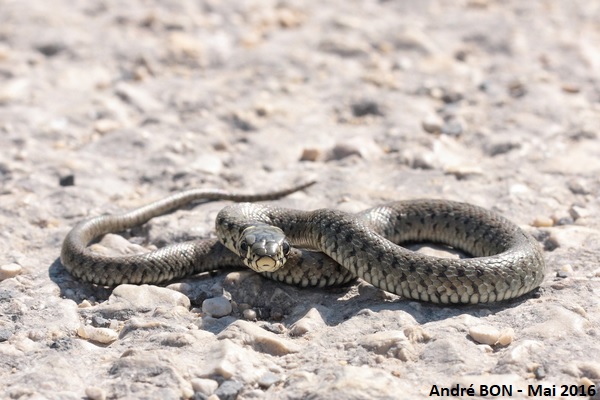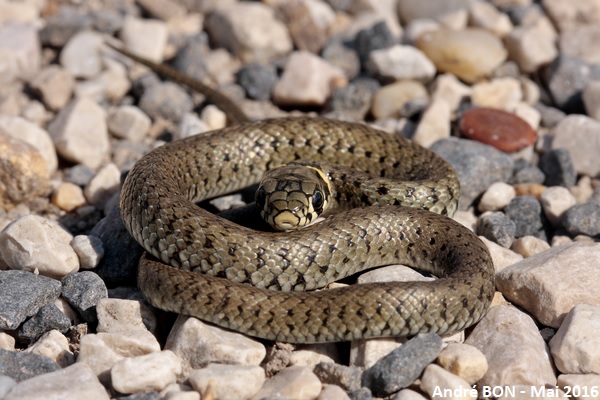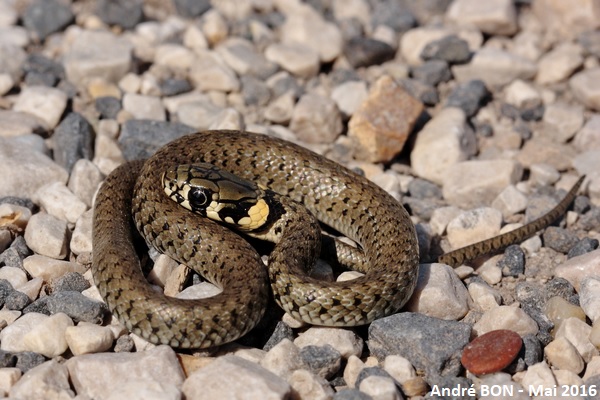



| Grass Snake (Natrix natrix (Linnaeus, 1758)) |




|
|
Scientific name: Natrix natrix (Linnaeus, 1758) Common name: Grass Snake Other names: Collared Snake or Ringed Snake French name: Couleuvre à collier Order: Squamata Suborder: Serpentes Family: Natricidae Size: 80 to 110 cm for males, 160 to 200 cm for females. Habitat : Lake shores, ponds and river banks. Marshes. Food: Amphibians, small mammals, fishes. Reproduction : Mating occurs in April/May. Females lay 30 to 40 eggs attached in strings inside compost heaps, rotting vegetation or manure heaps. Depending on the temperature young snakes, 15 to 20 centimetres long, will hatch out 40 to 70 days later. Geographic area: Europe east of the Rhine river, Middle East, North Africa. It is replaced by the Barred Grass Snake (Natrix helvetica) further west. |
The Barred Grass Snake, previously considered as a subspecies of the Grass Snake (Natrix natrix) is now listed as a separate species since 2017 following genetic analyses. The Grass Snake is a diurnal snake associated with water. It is a good swimmer and is often seen in water. It is able to stay as long as 15 minutes under water. It is also sometimes seen on the ground, in forests or meadows, where it can crawl far from water points. There are many variations in colour. The body can vary from dark green, to grey, brown and even to black. There are black marks on the upper side. The Grass Snake shows a yellowish or white collar at the rear of the head, just preceding two large black marks. The under side of the body is usually a paler colour. The tail is long and thin. The oval-shaped head is clearly separated from the body. The eyes have a round pupil. The Grass Snake hibernates inside natural cavities during a period of time depending of the local latitude. This snake is totally harmless for humans. |
| [To know more about the Grass Snake] [Next picture] [Top] |

|
The species identification as Natrix natrix rather than Natrix helvetica is only based here on the geographical location. I have read that dorsal markings are sharper on Natrix helvetica but I cannot confirm this based on my personal observations. |
| [To know more about the Grass Snake] [Next picture] [Previous picture] [Top] |

|
It was easy to observe this Grass Snake while it was crossing a small road. I waited until it arrived on the other side to protect it from the possible passage of a vehicle. However, it paused, perhaps due to my presence. I took the opportunity to take pictures. |
| [To know more about the Grass Snake] [Next picture] [Previous picture] [Top] |

|
Front view. |
| [To know more about the Grass Snake] [Previous picture] [Top] |

|
Side view. |